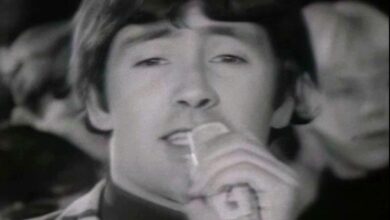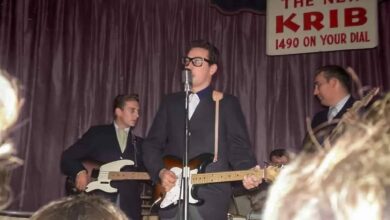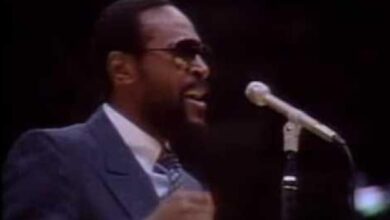The Rooftop Singers’ “Walk Right In” Redefines Folk-Pop and Tops the Charts in 1963
When “Walk Right In” soared to the top of the Billboard Hot 100 in early 1963, it did more than just introduce a catchy tune to American radios—it reshaped the perception of folk music in popular culture. Performed by The Rooftop Singers, a relatively new trio at the time, the song combined traditional roots with a fresh, vibrant energy that appealed to both folk purists and mainstream audiences. Its unexpected commercial success marked one of the earliest moments when a song grounded in pre-war blues tradition could command the top of the pop charts, opening doors for folk-inspired acts in the years that followed.
The Rooftop Singers were formed in 1962 by Erik Darling, a former member of The Weavers and The Tarriers, both key groups in the American folk revival. Seeking a new sound, Darling joined forces with folk singer Bill Svanoe and jazz vocalist Lynne Taylor. Unlike many folk groups of the time, The Rooftop Singers were deliberately assembled not just for harmony, but for innovation—Darling envisioned blending traditional American roots music with a rhythmic, modern twist that could bring something new to the genre. Their chemistry, along with their contrasting vocal textures, made the trio instantly distinct within the folk scene.
The idea for “Walk Right In” came from Darling’s fascination with a 1929 recording by Gus Cannon’s Jug Stompers, a Memphis-based group whose music embodied the ragtime and blues-inflected jug band style of the American South. Intrigued by the tune’s rhythm and lyrical hook, Darling sought to update it while maintaining its core identity. He restructured the arrangement and added a second twelve-string guitar to give it a brighter, fuller sound. The new version wasn’t just a cover—it was a creative revival, injecting new life into a forgotten classic while staying true to its spirit.
Recording took place in late 1962, with Vanguard Records handling the production. The standout feature of the track was its dual twelve-string guitars—played by Darling and Svanoe—which added an unusual sonic sparkle that cut through radio speakers like a breath of fresh air. Taylor’s vocals brought a swing-era smoothness, while the backing harmonies kept the folk sensibility intact. There were no drums, no studio trickery—just three voices and two guitars, perfectly balanced. The simplicity of the arrangement was its strength, allowing the rhythm and melody to shine without distraction.
Released in late 1962, “Walk Right In” quickly gained attention thanks to its upbeat, toe-tapping vibe and infectious refrain. By January 1963, it had reached No. 1 on the Billboard Hot 100 and stayed there for two weeks. It also topped the Billboard Easy Listening chart and broke into the Top 10 in several other countries, including Canada and Australia. The song was a rare example of a folk-based track dominating not only the niche folk circles but also the broader pop landscape. It sold over a million copies and earned a gold disc, a remarkable feat for a song rooted in 1920s blues.
The cultural impact of “Walk Right In” was significant. Coming just before the explosion of the British Invasion, it represented one of the last major folk hits of the pre-Beatles era. It proved that folk music could be rhythmic, fun, and accessible without losing its historical weight. It also arrived during the height of the folk revival movement in the U.S., giving the genre a much-needed commercial boost and encouraging record labels to take greater chances on acoustic acts.
For The Rooftop Singers, the hit was both a blessing and a turning point. The sudden fame launched them into national tours and television appearances, including spots on The Tonight Show and American Bandstand. However, replicating the success of “Walk Right In” proved difficult. While they continued to record and perform throughout the decade, none of their follow-up singles matched the massive impact of their debut. Still, the trio remained respected within the folk community, and their musicianship and arrangement choices continued to influence peers and younger acts alike.
The song’s influence on other artists was subtle but lasting. It helped normalize the use of the twelve-string guitar in popular music, paving the way for later artists like The Byrds and Gordon Lightfoot to explore similar textures. The Rooftop Singers’ approach—honoring tradition while updating it for a modern audience—became a model for the folk-rock movement that emerged just a few years later.
Covers of “Walk Right In” followed quickly. Trini Lopez performed a more Latin-tinged version, while folk artists like Dr. Hook and Jerry Reed gave it their own spins in later decades. Though many artists admired the song’s structure, few captured the same breezy ease and unforced charm of the Rooftop Singers’ version. Their recording remains the definitive take, a benchmark for how a traditional song can be made new without losing its roots.
At the time of the song’s success, the world was on the cusp of major musical change. The Beatles had already begun to rise in the UK, and within a year, the American pop charts would be dominated by electric guitars and rock bands. “Walk Right In” thus serves as both a high point and a swan song for the commercial folk boom of the early ’60s. It captured a fleeting moment when old-time music could sit comfortably at the top of the charts, right before the cultural shift would sweep in a new generation of sound.
Over the decades, the song has continued to receive airplay on oldies stations and appears regularly on folk and roots music compilations. Its infectious rhythm and joyful invitation—“Walk right in, sit right down, daddy let your mind roll on”—remains a universally appealing message, resonating with listeners long after its chart-topping days.
The legacy of “Walk Right In” also lies in its role as a bridge. It brought together generations—young listeners discovering the folk tradition for the first time and older fans hearing echoes of jug band roots they’d known for decades. In doing so, it helped validate traditional American music as a living, breathing form that could still evolve and connect with the present.
Though The Rooftop Singers would eventually disband and fade from the commercial spotlight, their contribution through “Walk Right In” endures. It remains a shining example of what can happen when musical history is respected, reimagined, and shared with joy and conviction.
In the end, “Walk Right In” wasn’t just a catchy tune. It was a cultural moment—a revival, a reinvention, and a reminder that sometimes, the simplest songs say the most. With two guitars, three voices, and a message of welcome, The Rooftop Singers created a classic that continues to walk right into the hearts of listeners everywhere.



